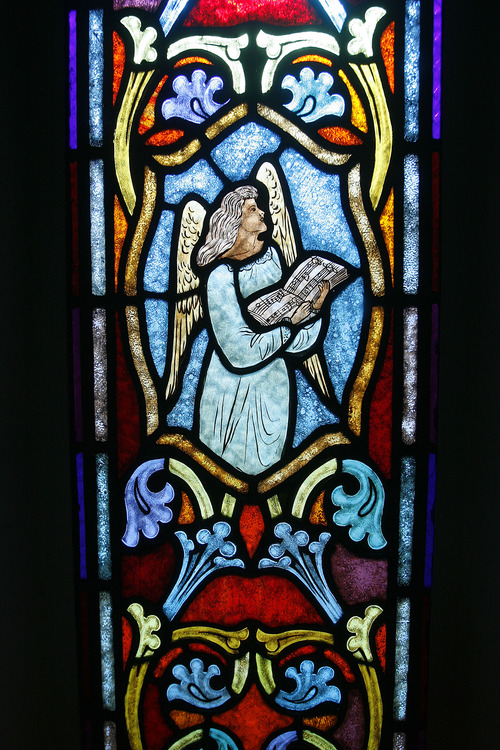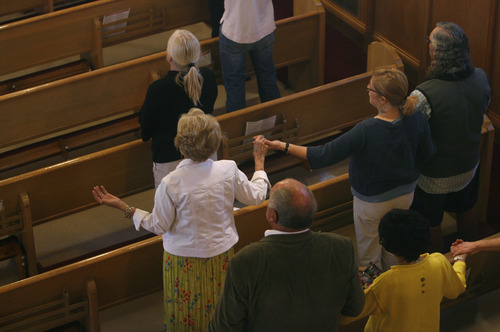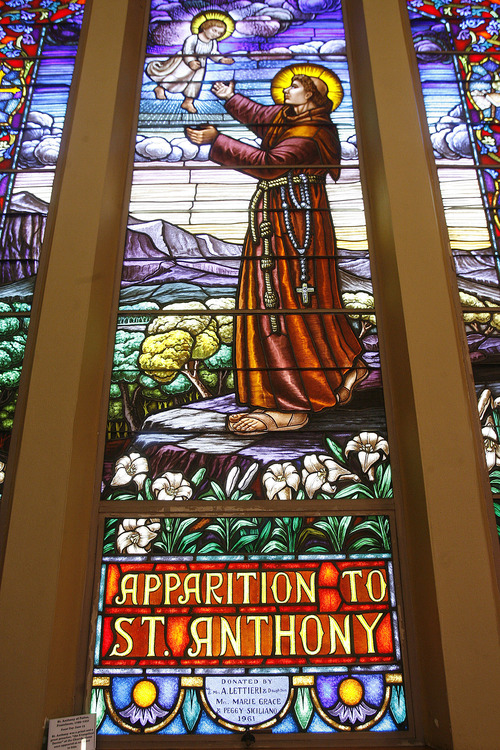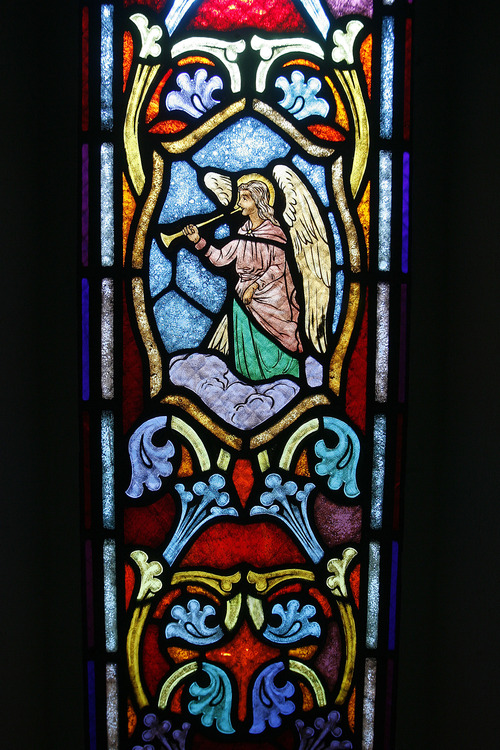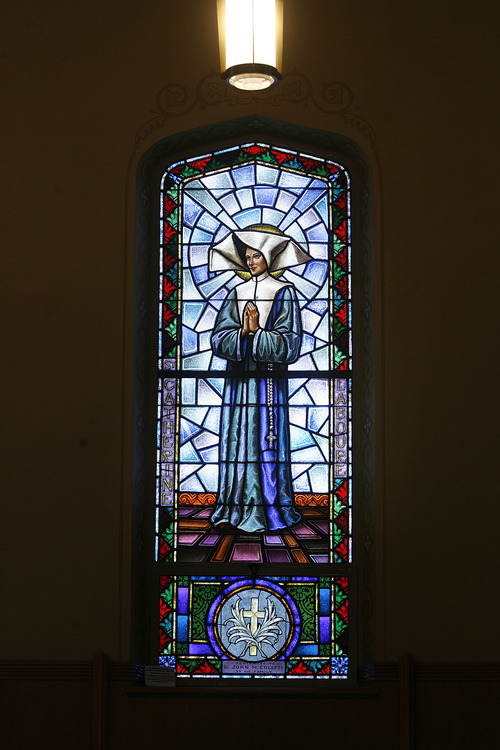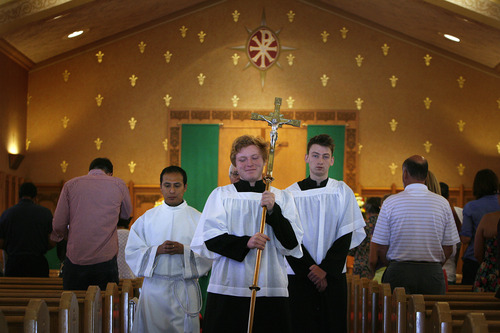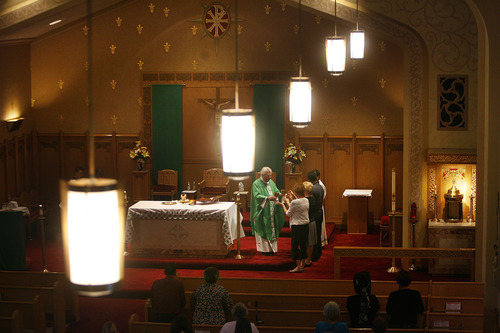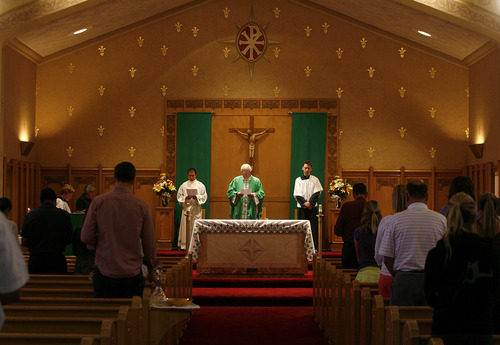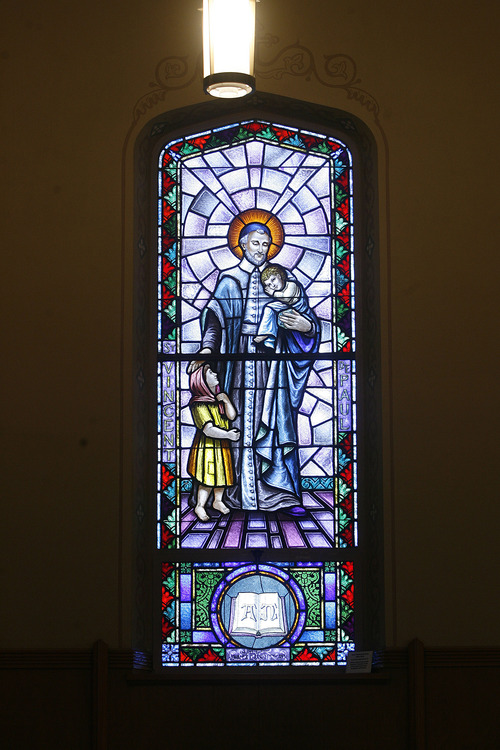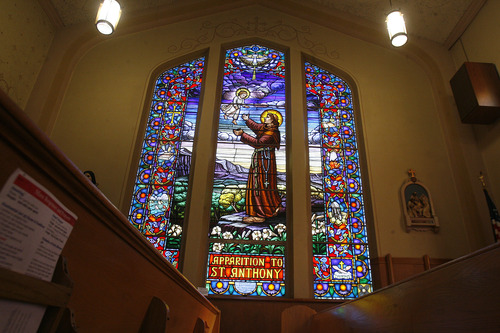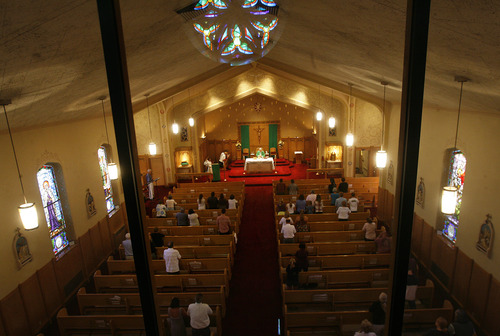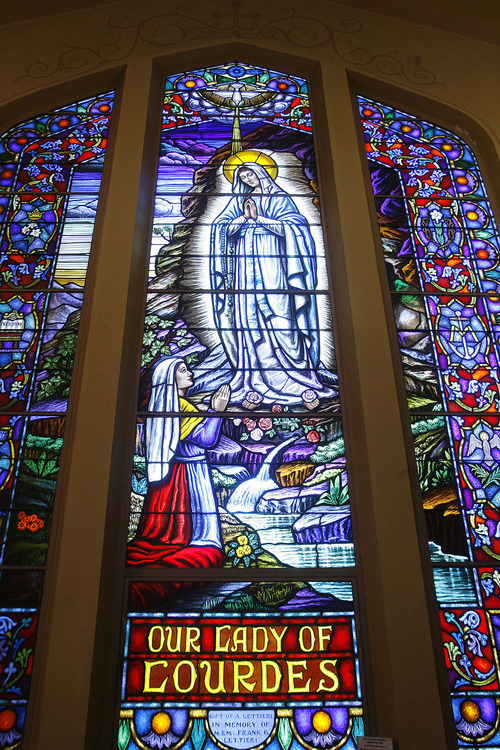This is an archived article that was published on sltrib.com in 2013, and information in the article may be outdated. It is provided only for personal research purposes and may not be reprinted.
The little east-side church, tucked next to her Catholic school, was a comforting place for fifth-grader Clara Brennan in the 1940s.
With its lightwood pews and sun-dappled stained-glass images, Our Lady of Lourdes seemed to embrace the young girl every morning as she attended 7:30 Mass, while waiting for classes to begin. Her parents, first-generation Americans who came from Italy, paid a public-school teacher to drive Clara from her Holladay home to the Salt Lake City Catholic school, but she always arrived too early.
So she spent the first 45 minutes of every school day, mesmerized by church's images and icons, drawn to its three-dimensional "Stations of the Cross," moved by the story of Lourdes' namesake.
"That's when I fell in love with the church," says Brennan, who still attends there decades later.
Brennan met and married her husband, Paul Brennan, at Lourdes. Their five children were baptized and confirmed there; three daughters walked down its maroon-carpeted center aisle to take their wedding vows, while saints and angels smiled down approvingly from the windows. Even some of the couple's 11 grandchildren have found a haven at Lourdes.
This month, Our Lady of Lourdes, one of Utah's first Catholic churches, turns 100.
The Rev. John C. Wester, bishop of Salt Lake City's Diocese, will be on hand Sunday for a commemorative Mass, and former parishioners from far and near will return to honor their beloved building.
"There's not another church in the diocese as beautiful as Lourdes — except maybe the Cathedral [of the Madeleine]," the Rev. J. J. Schwall, the church's current pastor, says with pride. "That's my biased view."
Lourdes was the first parish assignment for Schwall, a former bartender and tech manager at two Wendover casinos who became a priest seven years ago.
The first time he entered its sacred space, he says, he was overwhelmed, practically speechless.
"I said to myself," Schwall recalls, "Oh, Mother, I am home."
In the beginning • It was 1910 and Utah's first Catholic bishop, Lawrence Scanlan, set wide boundaries for Our Lady of Lourdes' parish as congregants began to fill up the burgeoning neighborhoods.
The parish stretched east from 700 East between 300 South and 1700 South, encompassing block after wide block of city streets and open space.
On June 29, 1913, the parish held a cornerstone-setting ceremony for a church that was to be built adjacent to what was then Judge Mercy Catholic Hospital, on the corner of 1100 East and 700 South. A year later, the new church was dedicated.
At the inaugural Mass, 50 children made their first Holy Communion, then Scanlan conferred the sacrament of confirmation on 40 other people as well, according to a parish history.
At the center was a marble altar, recovered from St. Mary Magdalene Church, which was once located at 200 East on South Temple but torn down to make room for the majestic Cathedral of the Madeleine.
Lourdes started out as a simple building, with a tall steeple, few windows and only the nave, or open space, for the pews and St. Mary's altar.
Five years later, new stained-glass windows were added and a residence for priests was built nearby.
In 1921, the hospital gave way to a K-12 Catholic school, at first called Cathedral School, then later Judge Memorial.
In 1938, some Lourdes' parishioners were split off to become part of St. Ann Parish. Ten years later, more left to join St. Ambrose.
Then, in 1949, Lourdes became responsible for Judge's lower grades, eventually contributing to the construction and maintenance of Our Lady of Lourdes Elementary School near the church.
Just under 40 years after it was dedicated, the church needed major renovations.
The transepts — or side wings — were added, the steeple removed and replaced by a Celtic cross, the foyer remodeled and the basement made usable as a social hall.
On New Year's Day 1978, the church made its final payment on its building debt, the history says, and celebrated with a "mortgage-burning ceremony."
And it's all in the name of a 19th-century teenage girl who claimed to have visitations from the Virgin Mary.
A nurturing intimacy • Our Lady of Lourdes is named for a poverty-stricken 14-year old girl, Bernadette Soubirous, living near Lourdes in southern France in the 1850s. Bernadette was barely literate and suffered from illnesses such as asthma, but had simple and deep faith in God.
One February day in 1858, she was collecting firewood near a small cave when she heard "what sounded like a strong wind," as the story goes, and then saw a figure "of small stature and incomparable beauty."
It was, she said, Mary, the mother of Jesus.
The Virgin told Bernadette to drink the water flowing under the rock to cure herself of illness, according to Lourdes' history. "The rock and spring became a pilgrimage place for Christians. Bernadette was canonized in 1933. Today people still visit Lourdes to be blessed and drink the holy water."
In the Salt Lake City church bearing her name, the "lady" — or Mary — can been seen in a window on the church's south transept.
She is surrounded on the left and right by a "crown of lilies," symbolizing her role as queen of heaven and lilies suggesting the resurrection of Jesus; a book representing the "word of God"; and an urn, with the letter M, signifying her virginity.
Some of the other windows depict St. Vincent de Paul, a 17th-century French priest who founded two religious orders; St. Patrick, who is said to have rid Ireland of snakes; St. Catherine Labouré, a Frenchwoman who had mystical visions; and St. Anthony of Padua, a 12th-century Italian monk known for eloquent preaching.
Though the church's art and architecture are "magnificent," says longtime member Jackie Harover, it's really the people and sense of community that keep her coming back.
Harover, who serves on the church's communications committee, has been a part of Lourdes for nearly 40 years. She has seen priests — many of whom arrived straight from Ireland — come and go. She has been there for weddings, confirmations, funerals. Each Sunday, she looks for familiar faces in the pews, and, though many are a tad more wrinkled than they used to be, she still finds them there.
In the 1980s, during the Saturday night Holy Week vigil, Harover watched as her neighbor, who had converted to Catholicism, was baptized. During the ritual, the whole church is dark until the priest and deacons bring in their lit candles and begin lighting parishioners candles one at a time until the whole sanctuary is ablaze.
"It was an unforgettable moment," Harover says, as her friend became a fellow believer in an ancient ritual.
Lourdes was the backdrop for it all, she says. "It's a very comfortable place."
The Brennans share that sentiment.
They moved out of the parish more than 20 years ago but couldn't think of worshipping anywhere else, Clara Brennan says. The church's population has changed since they were young. It has more than 200 families on the rolls, but typical attendance at services is about 100. Many congregants have left or died and few young families are moving in to replace them. "Snowbirds" leave for the winter and others go away on vacations in the summer.
No matter, Clara Brennan says, Lourdes still feels like home.
'Where We Worship' stories from early 2013
February • Salt Lake City's Mount Tabor Lutheran Church
January • Salt Lake City's First United Methodist Church —
Centennial service
Our Lady of Lourdes Catholic Church will celebrate its centennial Sunday at 10 a.m. with a Mass presided over by the Rev. John C. Wester, bishop of Salt Lake City's Diocese. A reception will follow in the church's social hall.


